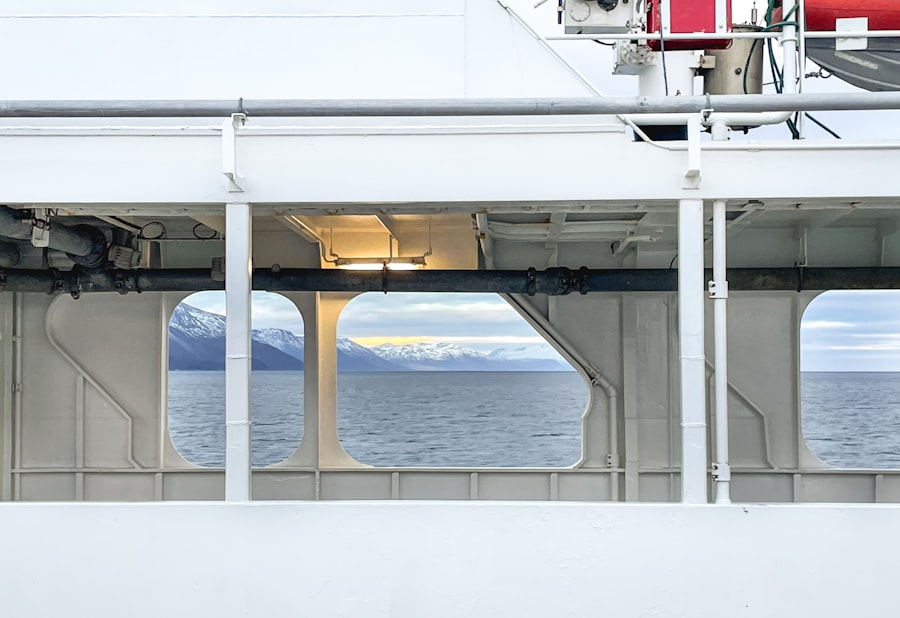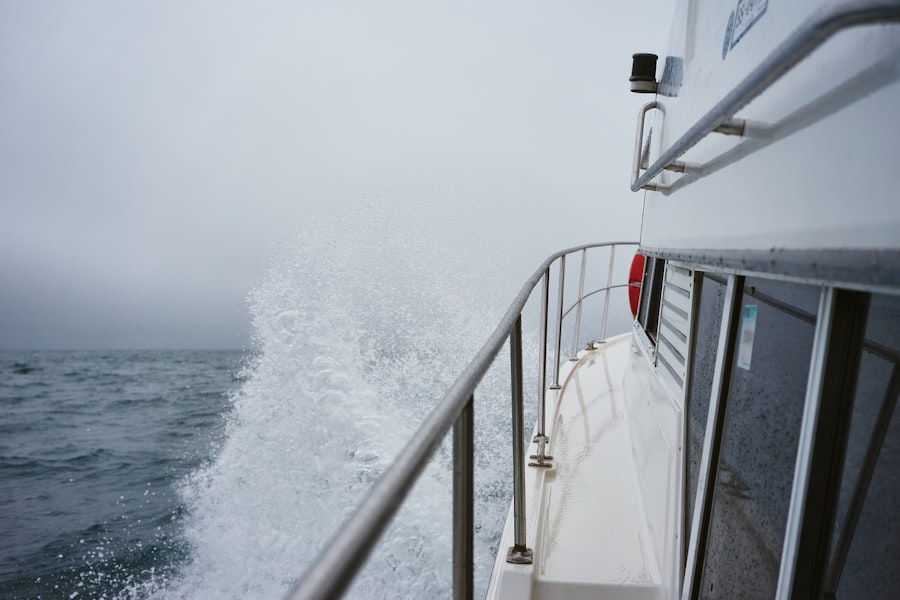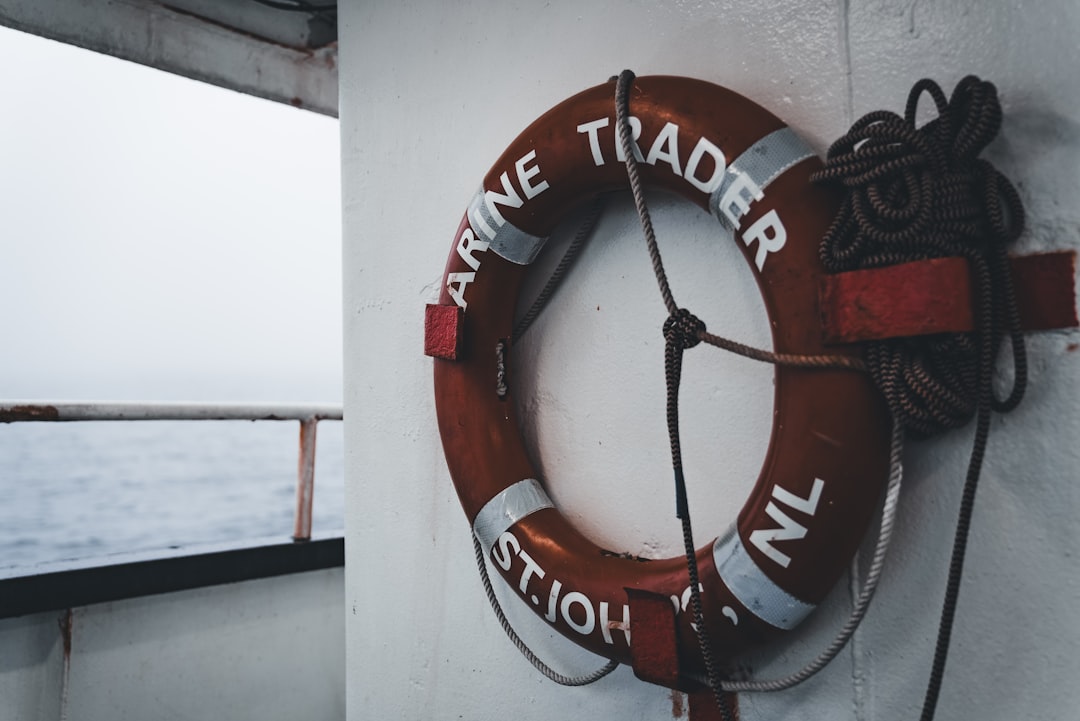The Drake Passage, a body of water that separates South America from Antarctica, is renowned for its tumultuous seas and breathtaking vistas. Stretching approximately 600 miles, it serves as a critical maritime route for vessels venturing to the southernmost continent. Named after the English explorer Sir Francis Drake, who navigated these waters in the late 16th century, the passage is not only a geographical marvel but also a significant point of interest for adventurers and researchers alike.
Its unique position makes it a gateway to the Antarctic, drawing countless travelers eager to experience its raw beauty and unpredictable nature. The passage is characterized by its powerful currents and often treacherous weather conditions, which can change rapidly. This unpredictability adds an element of excitement for those daring enough to traverse its waters.
The Drake Passage is not merely a means of transportation; it is an experience in itself, offering glimpses of the vast Southern Ocean and the promise of encounters with diverse marine life. For many, crossing the Drake Passage is a rite of passage, marking the beginning of an unforgettable journey into one of the most remote regions on Earth.
Key Takeaways
- The Drake Passage is a body of water between South America’s Cape Horn and the South Shetland Islands of Antarctica.
- The Drake Passage is named after the English explorer Sir Francis Drake and is known for its turbulent waters and strong winds.
- Planning and preparation for a Drake Passage cruise should include packing for cold and windy conditions, as well as preparing for potential seasickness.
- The Drake Passage is home to a diverse range of wildlife, including whales, seals, and numerous species of seabirds.
- Crossing the Drake Passage can be a thrilling and adventurous experience, with passengers often experiencing rough seas and dramatic scenery.
The History and Significance of the Drake Passage
Historically, the Drake Passage has played a pivotal role in maritime exploration and trade. In the 16th century, Sir Francis Drake became one of the first Europeans to navigate these waters, paving the way for future explorers. His journey was not just about discovery; it was also about establishing trade routes and asserting territorial claims during an era of intense competition among European powers.
The passage’s strategic importance was recognized early on, as it provided a direct route between the Atlantic and Pacific Oceans, facilitating commerce and exploration. Over the centuries, the Drake Passage has continued to be significant for scientific research and environmental studies. Its unique ecosystem serves as a barometer for climate change, with researchers closely monitoring its waters to understand broader environmental shifts.
The passage is also crucial for understanding oceanic currents and their impact on global weather patterns. As such, it has become a focal point for scientists studying marine biology, oceanography, and climate science, further solidifying its importance beyond mere navigation.
Planning and Preparation for a Drake Passage Cruise

Planning a cruise through the Drake Passage requires careful consideration and preparation. Travelers must first decide on the best time to embark on their journey, with the peak season typically running from November to March when conditions are more favorable. During these months, the weather is milder, and wildlife activity is at its peak, making it an ideal time for exploration.
However, potential travelers should remain aware that even during peak season, conditions can be unpredictable. In addition to timing, travelers should also consider their choice of cruise operator. Various companies offer different experiences, ranging from luxury cruises to more adventurous expedition-style trips.
It is essential to research each option thoroughly, taking into account factors such as onboard amenities, itinerary, and the expertise of the crew. Packing appropriately is another crucial aspect of preparation; layers of clothing are recommended to accommodate fluctuating temperatures and weather conditions. Essential items include waterproof gear, sturdy footwear, and binoculars for wildlife watching.
Wildlife and Nature in the Drake Passage
| Wildlife and Nature in the Drake Passage | Metrics |
|---|---|
| Albatross Species | 6 |
| Penguin Species | 4 |
| Whale Species | 8 |
| Seal Species | 5 |
| Icebergs | Countless |
The Drake Passage is teeming with wildlife, making it a paradise for nature enthusiasts and photographers alike. The nutrient-rich waters support a diverse array of marine life, including various species of whales, seals, and seabirds. Among the most commonly spotted whales are humpbacks, orcas, and minke whales, which can often be seen breaching or feeding in the waters.
The passage is also home to several species of penguins, including the iconic Emperor and Gentoo penguins, which can be observed on nearby islands during excursions. The natural beauty of the Drake Passage extends beyond its wildlife. The surrounding landscapes are characterized by dramatic icebergs, towering glaciers, and rugged coastlines that create a stunning backdrop for any voyage.
The interplay of light on the water and ice can result in breathtaking sunrises and sunsets that captivate travelers. This unique combination of wildlife and striking scenery makes the Drake Passage an unforgettable destination for those seeking to connect with nature in its most pristine form.
The Thrill of Crossing the Drake Passage
For many adventurers, crossing the Drake Passage is an exhilarating experience that embodies the spirit of exploration. The journey can be both thrilling and daunting; travelers often encounter rough seas that test their resolve and adaptability. The sensation of being at the mercy of nature’s forces can be both humbling and invigorating.
Despite its challenges, crossing the Drake Passage offers moments of awe-inspiring beauty. As travelers navigate through turbulent waters, they may catch sight of playful dolphins riding the bow wave or seabirds soaring overhead.
These encounters serve as reminders that even in tumultuous conditions, life thrives in this remote corner of the world. For many who embark on this journey, the thrill lies not only in reaching their destination but also in embracing the unpredictable nature of the passage itself.
Activities and Excursions during a Drake Passage Cruise

A cruise through the Drake Passage offers a plethora of activities and excursions designed to enhance the overall experience. Onboard programs often include educational lectures led by experts in marine biology, geology, and climate science, providing passengers with valuable insights into the region’s unique environment. These presentations help travelers appreciate the significance of their journey while fostering a deeper understanding of the challenges facing this fragile ecosystem.
In addition to onboard activities, excursions to nearby islands and research stations are common highlights of a Drake Passage cruise. Passengers may have opportunities to go ashore for guided hikes or zodiac excursions that allow for closer encounters with wildlife. Kayaking in icy waters or participating in polar plunges are also popular activities that add an element of adventure to the trip.
Each excursion is carefully planned to ensure minimal impact on the environment while maximizing opportunities for exploration and discovery.
Weather and Climate in the Drake Passage
The weather in the Drake Passage is notoriously unpredictable, characterized by rapidly changing conditions that can shift from calm to stormy within hours. Travelers should be prepared for a range of weather scenarios, including rain, snow, wind, and sunshine. The region’s climate is influenced by its proximity to Antarctica, resulting in cooler temperatures even during summer months.
Average temperatures can range from 30°F (-1°C) to 50°F (10°C), depending on the time of year. Understanding these climatic conditions is essential for travelers planning their cruise. While summer months offer milder weather, it is crucial to remain vigilant about potential storms that can arise unexpectedly.
Packing layers and waterproof gear will help ensure comfort during excursions and onboard activities. Additionally, staying informed about weather forecasts can aid in making informed decisions about daily plans while navigating this dynamic environment.
Safety and Navigation in the Drake Passage
Safety is paramount when traversing the Drake Passage due to its challenging conditions.
Experienced crews are trained to respond to emergencies and navigate through changing weather patterns safely.
Passengers are often briefed on safety protocols before embarking on their journey, ensuring they understand what to expect during their crossing. In addition to onboard safety measures, travelers should remain vigilant about their surroundings while at sea. Wearing appropriate gear and following crew instructions during excursions can help mitigate risks associated with unpredictable weather or wildlife encounters.
By prioritizing safety and adhering to guidelines set forth by experienced professionals, passengers can enjoy their adventure with peace of mind.
Accommodations and Amenities on a Drake Passage Cruise
Cruising through the Drake Passage offers various accommodations and amenities designed to enhance passenger comfort during their journey. Depending on the chosen cruise line, options may range from luxurious suites with private balconies to cozy cabins with shared facilities. Many ships feature comfortable lounges where travelers can relax while enjoying panoramic views of the surrounding seascape.
Onboard amenities often include dining options that showcase local cuisine as well as international fare prepared by skilled chefs. Passengers can indulge in gourmet meals while sharing stories with fellow travelers about their experiences at sea or during excursions. Additionally, many ships offer wellness facilities such as spas or fitness centers to help guests unwind after a day of exploration.
The Unique Experience of Exploring the Drake Passage
Exploring the Drake Passage is a unique experience that transcends mere travel; it is an opportunity for personal growth and connection with nature. The passage serves as a reminder of Earth’s raw power and beauty while offering moments of reflection amid its vastness. For many travelers, this journey becomes a transformative experience that fosters a deeper appreciation for our planet’s fragile ecosystems.
The camaraderie formed among fellow passengers during shared experiences adds another layer to this unique adventure. Whether bonding over shared excitement during rough seas or marveling at breathtaking landscapes together, these connections often lead to lasting friendships that extend beyond the voyage itself. Ultimately, exploring the Drake Passage becomes not just about reaching Antarctica but about embracing the journey itself.
Tips for Making the Most of a Drake Passage Cruise
To maximize enjoyment during a cruise through the Drake Passage, travelers should consider several practical tips. First and foremost, maintaining an open mind and flexible attitude will enhance one’s ability to adapt to changing conditions and unexpected experiences. Embracing spontaneity can lead to memorable moments that might not have been part of initial plans.
Additionally, engaging with onboard staff and fellow passengers can enrich the overall experience. Participating in discussions or attending lectures can provide valuable insights into the region’s ecology and history while fostering connections with like-minded individuals. Finally, taking time to disconnect from technology and immerse oneself in nature will allow travelers to fully appreciate the beauty surrounding them as they navigate this remarkable passage.
In conclusion, crossing the Drake Passage is more than just a journey; it is an adventure filled with challenges, discoveries, and unforgettable moments that resonate long after returning home. With careful planning and an adventurous spirit, travelers can create lasting memories while exploring one of Earth’s most captivating regions.
Cruising through the Drake Passage is an exhilarating experience, offering travelers a unique opportunity to witness the raw power of nature as they navigate the waters between the southern tip of South America and Antarctica. For those interested in learning more about the geographical and historical significance of this region, a related article can be found on MyGeoQuest. This article delves into the challenges and wonders of the Drake Passage, providing insights into its role in global ocean currents and its impact on maritime exploration. To explore this fascinating topic further, visit the article on
